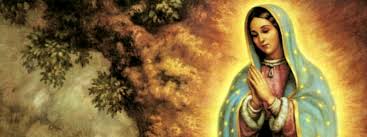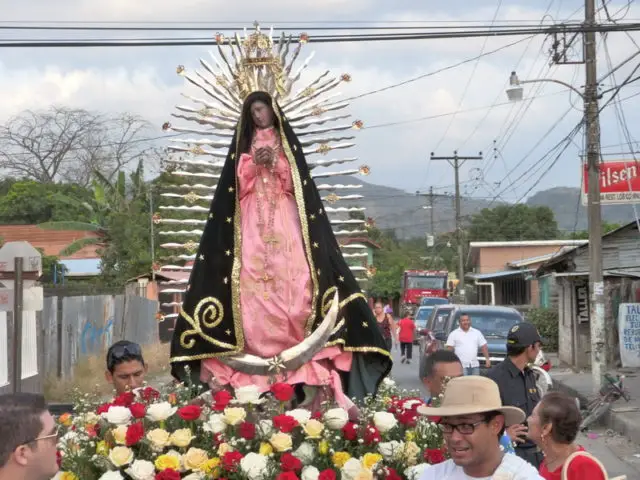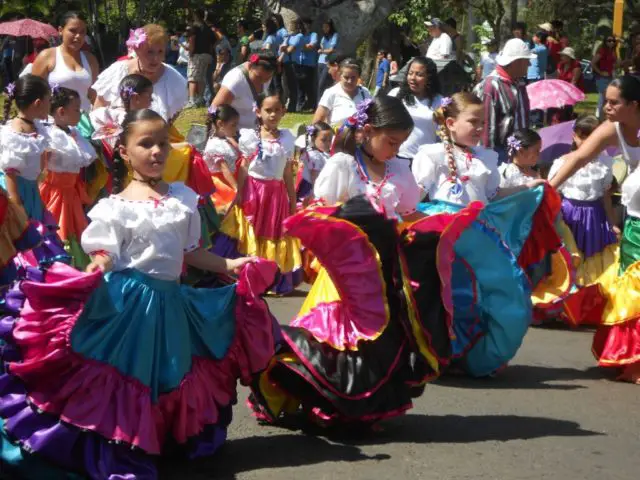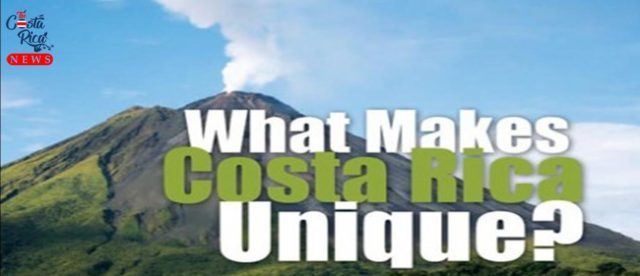Every year the Festivities of “Our Lady the Virgin of Guadalupe” is celebrated in Nicoya during November and December, which include different religious, cultural and even profane activities. Among these:

La Contadera de Días (The Day Counter).
It can be said that the festivities begin annually with an activity called “The Days Counter”, which takes place on November 1, from eight in the morning, at the “Casa de la Cofradía”. Counting the days remaining for the “Celebro” (that’s what the Natives call December 12). This count is made with corn grains of different colors: white, yellow and purple.
Pica de Leña (Woodcutting).
Nicoya is known to the world for being a town of very old customs, and one of them is the traditional “wood cutting” that takes place every year in mid-November. The tradition, which has more than a century of existence, has indigenous Chorotega origins that lived in untouched villages such as Nambí, Sabana Grande, Marabú, Dulce Nombre, Caimital, the Mansion, and Cúrame, among others. The “Pica” is to have ready, cut up and stockpiled all the firewood that will be used in the religious “Cofradía”, to make the meals for visitors arriving on December 12, the day of the Virgin of Guadalupe.
The “Pica” starts very early when it is still dark, but first, you have breakfast with typical foods such as chicheme, rice with meat, tortillas and the delicious steaks, which are prepared with rice and cocoa. It all ends at noon when the colorful carts pass in a parade through the streets of Nicoya towards the “Cofradía (religious brotherhood) where the “Bolleros”, farmers who are the ones who chop the firewood, parade very happily.
In recent years, this typical activity has attracted the attention of the large media that gives the activity a wide coverage and attracts the attention of many tourists. In the “Cofradía”, the work has begun long before the preparation of the meals and drinks that will be offered to all the people who arrive at the “House of the Virgin Mary”.
La Entrada de los Empleados (Employee Entry).

It is known as the day of “Employee Entry”, because all the (religious) brothers make their entry to the “Casa de la Cofradía” (House of the Brotherhood), after participating in the Mass and procession in honor of the Immaculate Conception of Mary, during the hours of the morning. That is why, at noon, fireworks are set off, announcing to the community the entry of all officials or cofrades. Once they arrive at the brotherhood they are ready to carry out the only activity of this day, which is the task of panning the “puja gua” corn dough that will be used to prepare the “puja gua” corn atole the next day. Also proceeding to scrape the “dulce de tapa” (sugar cane natural sweetener) that will sweeten the atole.
La Atolada (The Atole feast).
It is a special activity celebrated in the city of Nicoya, which consists of the distribution of ATOL by the Brotherhood of the Virgin of Guadalupe. This activity takes place on December 9 within the activities in honor of the eve of the feast of the Virgin of Guadalupe. The tradition of this Marian festival dates from 1544 and rescues the indigenous custom in place since pre-Columbian times of celebrating in the community the consumption of drinks such as atole, chicha or chicheme. It is both a festive and ritual activity, where the indigenous custom of ceremonially sharing the corn atole, as the ancestors did.
These “Corn” festivities in honor of the Virgin of Guadalupe show their main aspects as a “religious syncretism” rich in symbolism for the Mocoano indigenous people. Gathering to collectively celebrate the feast in honor of the Virgin with the preparation and consumption of the corn atole and this manner celebrate abundance, fertility, and honoring the Deities.
December 10: Alza de la Ramada (Rise of the “Ramada”).
From eight in the morning, the main activity of the day begins, which is to collect the “Ramada”(monetary offerings to the church) on the outskirts of the “Casa de la Cofradía”, where donations and offerings of the faithful devotees will be collected on December 11 and 12. This collection of donations has as its main objective “to pay the religious expenses”, as drawn up for this purpose.
December 11: Las Visperas Del Celebro (The Before the Celebration).
The activities of this day begin with the “Alborada” (dawning) from 4 in the morning. In the esplanade in front of the Colonial Church, fireworks are set off, the bells of the temple are ringing and lively music is played by the band, here people begin to congregate and then begin the journey to the “Casa del Patron de la Alborada” (Patron of Dawn’s house) who will offer a breakfast with music and dance to all that are present.
This day the holy procession begins, where the Dance of “La Yegüita” (the mare) is executed being interspersed with the band’s music. This traditional dance is part of the particular manifestations that allow the fusion of religious and pagan elements in the Festival. It symbolizes and commemorates a fact that is part of the collective conscience of Nicoya and its people, a miracle that the natives attribute to the favor of the Virgin of Guadalupe, so in gratitude they decided to perform this dance that has had its variants throughout the centuries.
December 12: Día Del Gran Celebro (Grand Celebration Day).

The activities of this day begin with the “Dawn’s Patron” giving the announcement at five in the morning, where the entire community is awakened with fireworks, music, and bells ringing in honor of the great day of Our Lady of Guadalupe. It continues with the Dance of “La Yegüita”.
In the “Cofradía”, already the preparation of the meals and drinks is underway, and will be offered to all the people who arrive at “La Casa de la Virgen”.
The “Cofradía” of Our Lady of Guadalupe has a property located 200 meters east of the central park of Nicoya, which is known as “La Casa de la Virgen” (the house of the Virgen) site of the “Cofradía”, that is where the main activities that make up these colorful celebrations are carried out. This house was donated many years ago by a faithful devotee of the Virgin of Guadalupe, Mrs. Mariana Montiel de Pérez. All activities include the participation of the faithful devotees of the Virgin of Guadalupe, the brotherhood, the parish and a large part of the civilian population of the Nicoya community.
These festivities imply a centuries-old tradition inherited from the Chorotegas (indigenous) ancestors, who recognized as their patron saint the Virgin of Guadalupe, whom they called “La Señorita” (The Miss). This was after the evangelizing processes carried out in the Nicoya region, with the arrival of the Spaniards in 1522.
Among the most important religious celebrations for the “Chorotegas”, the “Fiesta del Sol” (Sun Festival) stood out, in which with great solemnity they dedicated to this god (the Sun) their crops and maidens through collective dances and rites. Among which the intake of fermented beverages was common. With the passage of time and the processes of the catholic catechism, there was the replacement of this great native festival, with the (Spanish) Feast of the Virgin of Guadalupe.
Mayordomos (Butlers).
This activity ends with the election of the new “Mayordomos”, who are in charge of the “Cofradía”, who have the responsibility of organizing the festivities for next year. In this ritual, to choose the “Mayordomo”, only women over 15 years old can propose and choose them. With the outbursts of the last fireworks, the doors of the “Cofradía” are closed and go into waiting for the next cycle, the second Saturday of November.


